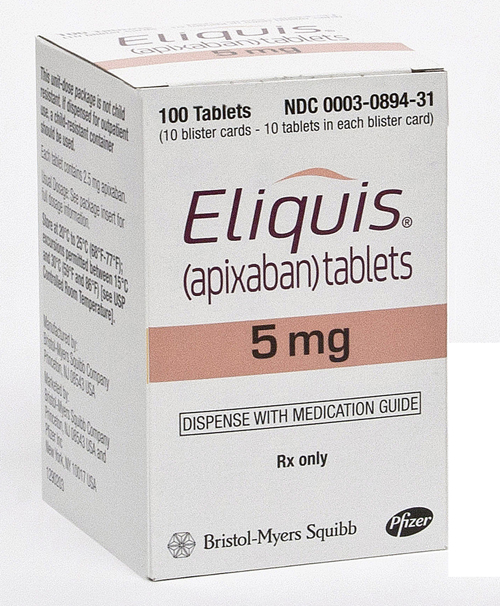The warfarin-replacement market has been bracing for the entry of Eliquis since well before it won FDA approval in December, as the drug stands to benefit from stronger pre-market vetting, clear messaging and lessons learned from earlier-to-market competitors.
Boehringer Ingelheim’s Pradaxa, which was the first alternative to warfarin in 50 years when it was approved in 2010, has seen a steady uptick in sales, with 2.6 million US prescriptions bringing in $827 million last year. J&J/Bayer’s second-to-market Xarelto, approved in 2011, has seen a lower trajectory, pulling in $200 million on 818,000 US prescriptions last year.
Now comes Eliquis. Leon Henderson-MacLennan, a principal at research firm inThought, told MM&M that rigorous clinical trials make it clear “Eliquis is destined to be a preferred anticoagulant of choice,” thanks in large measure to clarity about which patients it’s most appropriate for.
By contrast, Pradaxa has struggled with a clear delineation about who should take it, and has also been dogged by dissonance regarding the bleeding risk shown in clinical trials and that found in the real world. Although the FDA said in November that Pradaxa was not associated with a higher risk than warfarin, MacLennan said concern has made people “less inclined at least to switch patients from warfarin to dabigatran.” (Physician KOLs with whom MM&M spoke said that with rare exception, drugs in the category appear to be well tolerated.)
The buzz about Eliquis hasn’t been limited to physician’s offices. Credit Suisse analyst Catherine Arnold’s September 2012 write-up about Johnson & Johnson indicated that Xarelto’s potential in the stroke-prevention realm was limited once pharmacies could start stocking Eliquis.
Leerink Swann analyst Seamus Fernandez wrote in an investor note last week that he expects Eliquis will be a “relatively slow initial launch that picks up over time.” MacLennan also said that Eliquis will still have to find its way into the marketplace, but reiterated that the clarity on the best patients for the drug and the amount of testing will smooth its entry.








